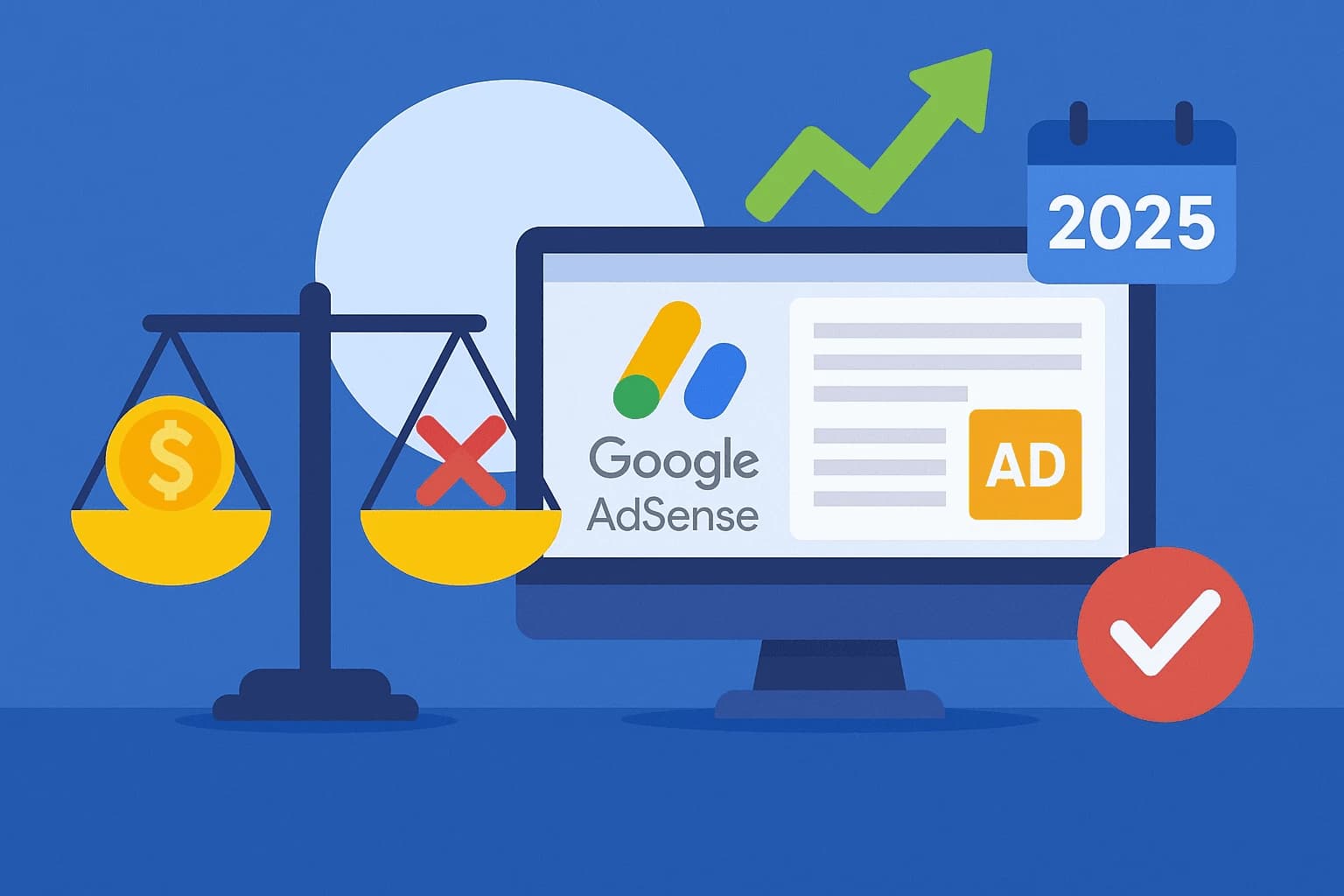.webp&w=3840&q=75)
* All product/brand names, logos, and trademarks are property of their respective owners.
If you’ve ever stared at your Google AdSense dashboard wondering why your earnings feel stuck, you’re not alone. Many publishers pour time into creating great content, only to see disappointing ad revenue. The truth? It’s not just about traffic volume or niche — your site’s ad layout could be quietly limiting your income potential.
Enter RPM — Revenue Per Mille — the metric showing how much you earn for every 1,000 pageviews. In 2025, optimizing your site for higher AdSense RPM is one of the smartest ways to grow your earnings without adding extra ads or sacrificing user experience.
One of the most overlooked yet powerful factors is ad layout design — the visual and structural blueprint that determines where ads live and how users engage with them. Good design ensures every impression counts, every ad is viewable, and your site still feels clean and professional.
In this guide, we’ll explore proven AdSense layout blueprints backed by real-world data, share optimization tips on Ad Refreshes, and explain how metrics like CPC (Cost Per Click) and CTR (Click Through Rate) shape your overall performance. Let’s unlock your site’s full earning potential — one smart layout at a time.
CPC (Cost Per Click) is how much you earn when someone clicks an ad.
CTR (Click Through Rate) measures how many visitors click on an ad.
RPM combines both metrics — plus impressions — giving you a 360-degree view of ad performance.
Formula:
RPM = (Earnings / Pageviews) × 1,000
So, if you earn $20 from 10,000 views, your RPM = $2 — meaning $2 per 1,000 pageviews.
CPC and CTR can fluctuate daily, but RPM shows overall efficiency — how well your pages turn views into revenue. A higher RPM means:
Ads appear in high-visibility areas
Users engage with content and ads naturally
You’re attracting premium, advertiser-friendly traffic
Layout is everything. Poor placement hides ads; smart placement improves visibility and engagement. A tidy, responsive structure improves both RPM and user trust.
Structure:
Ad above article title
Sticky sidebar (300×250)
Mid-content ad
Footer banner (728×90)
Why It Works:
Early impressions increase RPM; sticky units enhance visibility. Ideal for blogs and tutorials.
With 70% of global traffic on mobile, this blueprint focuses on Responsive Units and scroll-based engagement.
Structure:
In-article ad after 1st paragraph
Sticky anchor ad (bottom)
Native ad has around 70% scroll
Auto Ads are selectively enabled
Why It Works:
Early placement boosts viewability; anchor ads capture consistent exposure. Great for mobile-heavy audiences.
Structure:
Grid homepage with inter-post ads
Leaderboard above fold
2-3 in-article ads
Sticky sidebar (Desktop)
Why It Works:
Ads appear while users browse categories — improving viewability even before clicks. Perfect for media and news sites.
Example 1 – Balanced Layout Raises RPM by 35%
A finance blog added a sticky sidebar and mid-content ad; RPM rose from $1.80 → $2.45 in three weeks. Viewability improved 40%.
Example 2 – Mobile-First Layout Doubles RPM
A tech blog using Layout B cut Auto Ads, added early in-article placement + anchor unit. Mobile RPM doubled from $0.80 → $1.60.
Use high-performing formats (300×250, 336×280, 728×90). Always enable responsive units to ensure perfect scaling across screens, improving viewability and user satisfaction.
Set reasonable ad refresh intervals (30–60 seconds visible-only) to increase impressions ethically. Overdoing refreshes can hurt RPM and advertiser trust.
Focus on Viewability — ads must be seen to earn. Lazy-load ads, minimize layout shifts, and improve core web vitals for higher scores and revenue.
Combine two manual placements + selective Auto Ads for the best blend of coverage and control.
Track CPC (Cost Per Click) to see which formats pay most and CTR (Click Through Rate) to measure ad appeal. Adjust placement based on these metrics to sustain RPM growth.
Too Many Ads — overcrowding reduces viewability and violates policy. Limit to 3–5 strategic placements.
Ignoring Mobile Users — always test layouts on multiple devices and screen sizes.
No Testing or Tracking — regularly A/B test placements and compare RPM across pages.
Each correction boosts your chances of achieving a higher AdSense RPM without more traffic.
Improving AdSense revenue in 2025 isn’t about adding more ads — it’s about using smarter, more intentional ad layout design.
You’ve now learned:
How RPM, CPC, and CTR interconnect
Proven AdSense layout blueprints that increase RPM
Why responsive units, viewability, and ethical ad refreshes matter
How to avoid the most common layout mistakes
Start small — apply one layout blueprint, track RPM for a week, and iterate. Smart placement and testing are the new SEO for monetization.
Remember: more ads don’t equal more money — better layout equals better earnings.
Related
Is Google AdSense Still Worth It in 2025? Pros & Cons Reviewed
.webp&w=3840&q=75)
9 October 2025

8 September 2025
No comments yet. Be the first to comment!